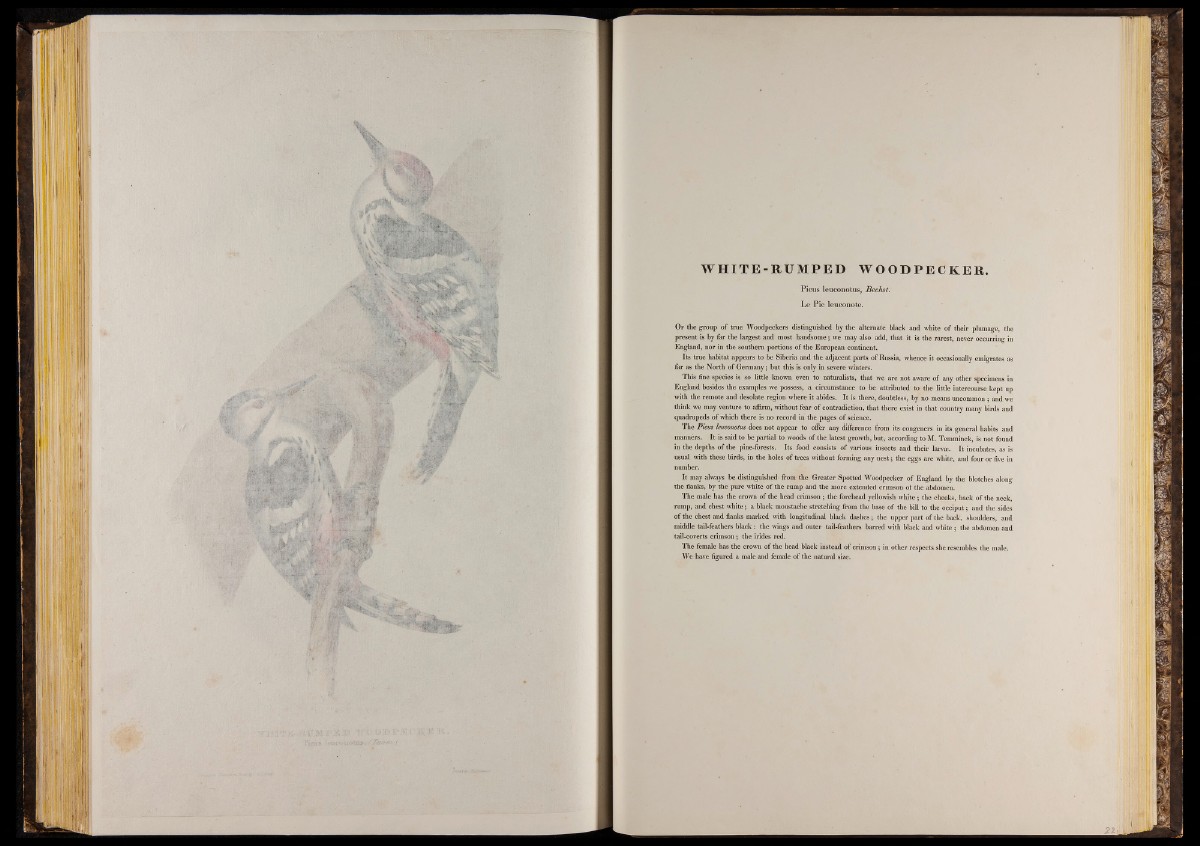
■
til, M i
W H I T E - R U M P E D WO OD P E CKE R .
P ic u s leuconotus, B e c list.
L e P ic leu co n o te.
Of the group o f true Woodpeckers distinguished by the alternate black and white o f their plumage, the
present is by far the largest and most handsome; we may also add, that it is the rarest, never occurring in
England, nor in the southern portions of the European continent.
Its true habitat appears to be Siberia and the adjacent parts of Russia, whence it occasionally emigrates as
far as the North of Germany; but this is only in severe winters.
This fine species is so little known even to naturalists, that we are not aware of any other specimens in
England besides the examples we possess, a circumstance to be attributed to the little intercourse kept up
with the remote and desolate region where it abides. It is there, doubtless, by no means uncommon ; and we
think we may venture to affirm, without fear of contradiction, that there exist in that country many birds and
quadrupeds o f which there is no record in the pages of science.
The Picus leuconotus does not appear to offer any difference from its congeners in its general habits and
manners. It is said to be partial to woods of the latest growth, but, according to M. Temminck, is not found
in the depths o f the pine-forests. Its food consists of various insects and their larv*. It incubates, as is
usual with these birds, in the holes of trees without forming any nest; the eggs are white, and four or five in
number.
It may always be distinguished from the Greater Spotted Woodpecker of England by the blotches along
the flanks, by the pure white of the rump and the more extended crimson of the abdomen.
The male has the crown of the bead crimson ; the forehead yellowish white; the cheeks, back of the neck,
rump, and chest white; a black moustache stretching from the base of the bill to the occiput; and the sides
o f the chest and flanks marked with longitudinal black dashes; the upper part of the back, shoulders, and
middle tail-feathers black : the wings and outer tail-feathers barred with black and white ; the abdomen and
tail-coverts crimson; the irides red.
The female has the crown of the head black instead of crimson; in other respects she resembles the male.
We have figured a male and female o f the natural size.